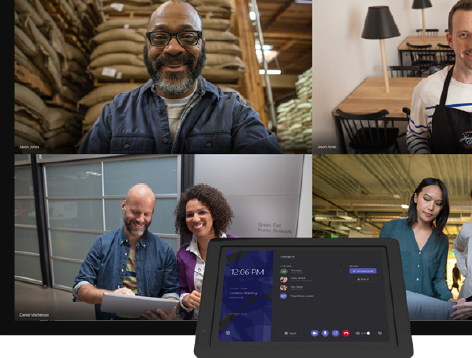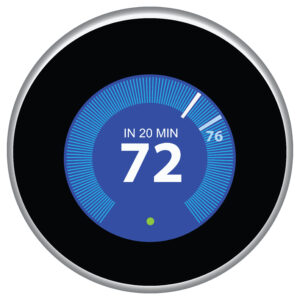I recently had the central air conditioning system in my house replaced. It was a major undertaking involving two AC technicians and three days of effort. With the new system up and running, I began thinking about the impact of the change from a human point of view. Installing the new system was seemingly a major change, but it had no bearing on my family’s use of the AC. In fact, if you weren’t around when the technicians were doing the work, you wouldn’t even have noticed the change had occurred!
Now, let’s contrast replacing the AC system with the new Nest thermostat I installed to take advantage of the latest advances in technology. It was a simple and quick installation and was seemingly a small change. However, although it took only a few minutes to install, it caused quite a hubbub for the whole family! It required all kinds of setup questions, creating passwords, installing mobile apps, and in turn, the process presented difficulty for each family member to access it and use its functionality. In fact, I found myself reverting to using the thermostat in the same way I used the former one – setting a temperature and adjusting it manually when needed – which essentially defeated the purpose of the new thermostat in the first place!

The relative impact of change evidenced in replacing the AC system and the thermostat illustrates how individuals are impacted by different types of change. As I sat at my desk one recent morning, sipping coffee, and reviewing my work tasks for the day concerning workforce transformation, I began to draw a comparison to how change impacts workers based on their point of view and in a broader sense, workforce transformation projects.
Let’s take a look at my insights and recommendations on the subject.
The Impact of Change from the Worker’s Point of View
This example highlights the fact that when planning for change that impacts workers, it’s important to view the impact of the change from the workers’ point of view. I recommend asking:
- How does the change impact what workers do?
- How does the change impact how workers perform specific functions?
- What are the differences between the current state, the transition state, and the future state with regards to their interaction with the change?
Consider how replacing our central AC system at home was a major back-end change, but had negligible impact on my family and conversely, replacing the thermostat, a much smaller change, had a considerable impact from each family member’s point of view.
All Changes Are Not Equal in the Office 365 Journey
Let’s relate this approach to an Office 365 example. Many Office 365 projects today involve moving from on-premises Exchange servers to Exchange Online. These projects, from an IT perspective, are intricate and involve large teams across multiple disciplines to coordinate and execute. However, from the workers’ perspective, the current state, transition state, and future state may essentially look the same:

From the workers’ perspective, there’s virtually no difference and, correspondingly, no impact as to how they do their job. From a management perspective, there are minimal activities other than an awareness of the change and some communication concerning who to contact for support.
Now, contrast the move to Exchange Online with a transition from Skype for Business to Microsoft Teams:

Here, there’s a far more dramatic change for the workers! The change is profound in both the experience and in the way they’ll work, making this transition one that could be overwhelming if not proactively managed.
Gauging the Impact of Change
 The planning phase for any adoption and change management initiative should describe the characteristics of the change. Change could occur because of a new solution, a new or different process, an update in systems, or many other changes in the environment. However, it is important to note that only certain types of changes require workers to adapt and adopt.
The planning phase for any adoption and change management initiative should describe the characteristics of the change. Change could occur because of a new solution, a new or different process, an update in systems, or many other changes in the environment. However, it is important to note that only certain types of changes require workers to adapt and adopt.
In identifying the change characteristics, the following questions should be considered:
- Who is impacted? This effort should be organized by personas as well as aligned with the timing of the change.
- What is impacted and how? What are the actual changes? Upfront, this may be high level but will need to be detailed in the subsequent stages of planning. For example, a change could be “Making a voice phone call” and ‘the how’ would identify the old ways of making a voice call versus the new way.
- Is the change different for different groups? Personas are important to identifying who is impacted in what way. For example, an “on the go pro” may have a different set of changes being introduced compared to a desktop-centric worker.
- Is the change being introduced in stages? Parts of the solution may be implemented in stages, implying a certain set of changes happening in “change waves”.
Workforce Personas Are Key
As you can see, taking a persona-based approach to change is a key ingredient in helping to identify the details of change from workers’ points of view. Read our perspective in our new eBook, Take a Personalized Approach to the Human Side of Technology Change, to understand the key components of a successful ACM program.
Summary
Understanding changes from a worker’s perspective feeds into your overall change management strategy and planning. It’s a rewarding endeavor when you successfully partner with workers on their change journey and come out on the other side with a solution that realizes the potential that was anticipated!
What strategy does your organization have in place to manage adoption and change management?
Feel free to share your thoughts and experiences, and good luck on your own journeys!


